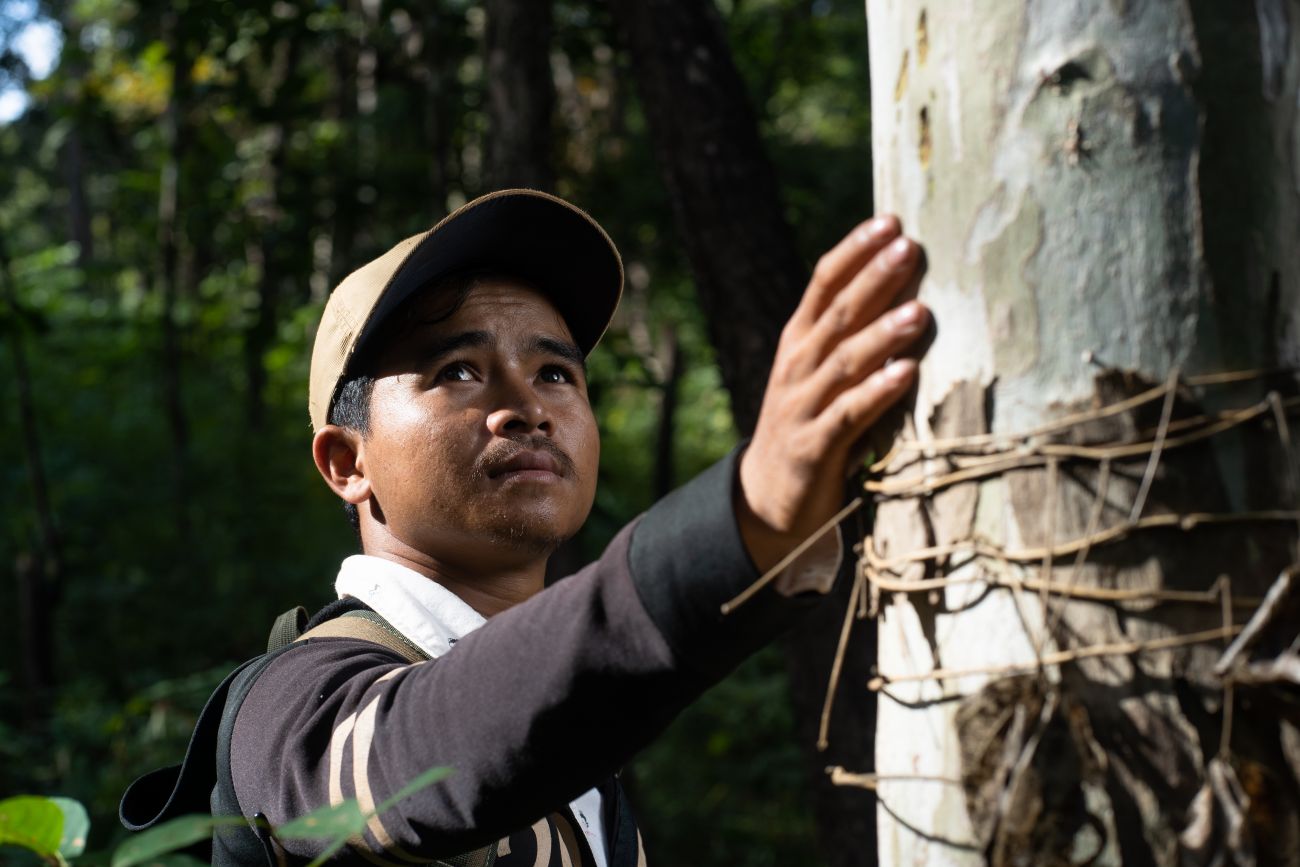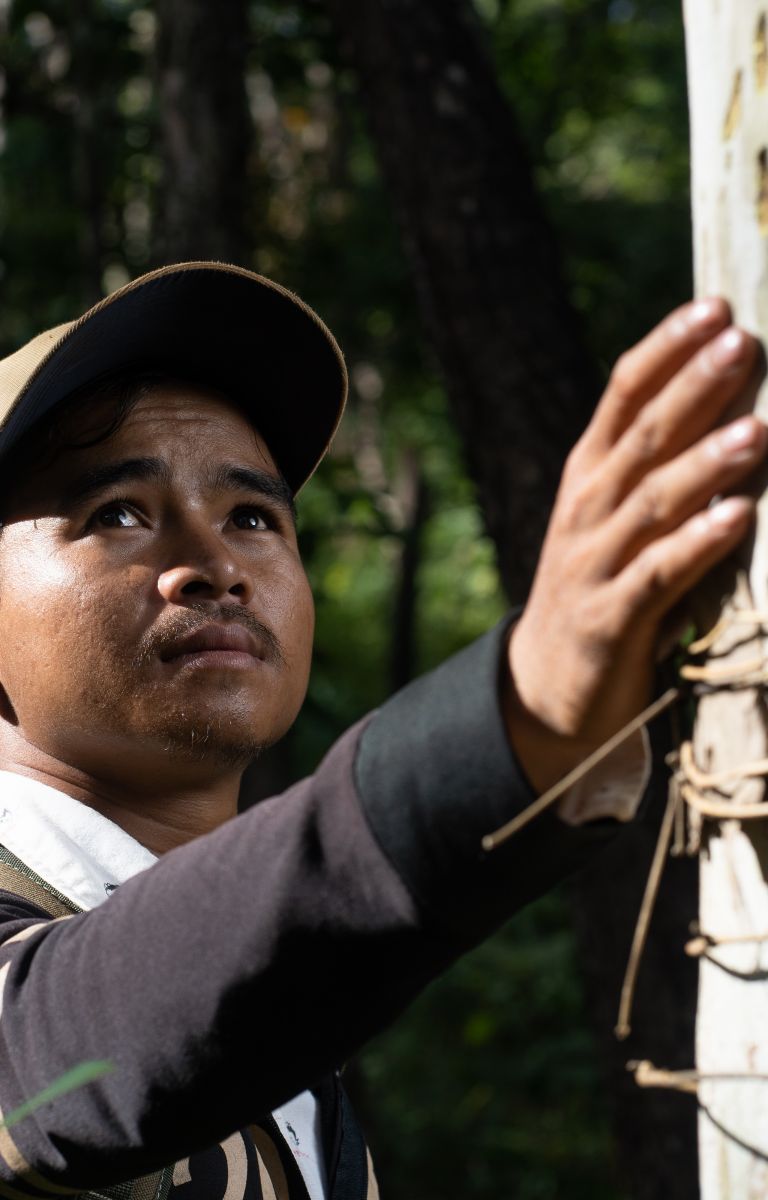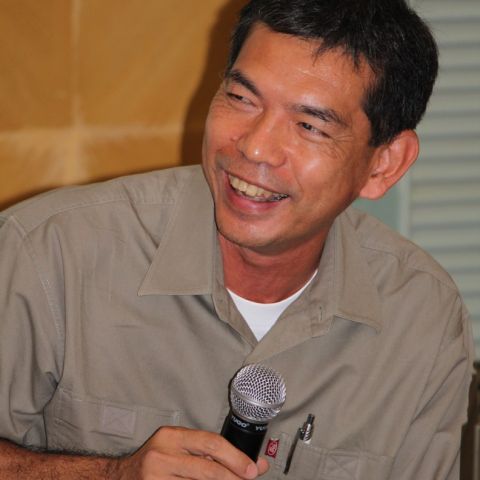

In 2017, people in three villages of Gwa Township in Myanmar teamed up to start a new business that processes a forest plant called rattan into canes and furniture. In the first year, this new enterprise made 15,000 US dollars, of which 10 percent went to a development fund for the three villages. This would have been impossible without tenure and the right to control and use the local forest and its resources.
Since 2015, the ASFCC has worked with community members, civil society organisations, and local and national forestry official to secure the tenure of over 10,000 hectares of forests for these and another 15 villages in the township. With training in enterprise development and marketing, the villagers are earning money that they can reinvest in their forests. Their success is a reminder that social forestry can only work if communities have secure rights to use land and forests.
“Tenure is the foundation of social forestry,” says Saengcharnchai. “But too often tenure is weak and unclear. The ASFCC has been working with ASEAN and its Member States to address this.”
Millions live with insecure tenure
In 2020, the ASFCC produced a report on the status of tenure in each country and good practices for enhancing tenure, rights and benefits from social forestry. The report shows just how complex the issue of tenure is. Customary tenure rights often overlap with statutory ones. And even when people have rights on paper, those rights are not necessarily secure. In some cases, they only last a few years. In others they are longer, but people still fear that their rights will not be respected if more powerful interests arrive.
Indeed, a recent study found that tens of millions of people in Cambodia, Indonesia, Thailand and Viet Nam felt their tenure was insecure. This was true for one-third of the Cambodians asked, and one-quarter of the Indonesians.
“Weak tenure and user rights is a big bottleneck to social forestry,” says Ronnakorn Triraganon (Ron), Senior Strategic Advisor, RECOFTC.

“Clear and strong tenure and rights enable people to visualise investments and returns. This is an incentive for sustainable forest management.”
Ron Triraganon
That’s why ASFCC has highlighted tenure, says Capistrano. “The ASFCC clarified what tenure is, what the consequences of a lack of tenure are, and why it is necessary to deal with it,” she says. “We encouraged governments to recognise customary tenure, be flexible about the diversity of tenure arrangements available, and made it possible for countries learn from each other. Over time, tenure became visible in ASEAN policy documents, discussions and action plans.”
Cultivating an enabling environment
Even when communities have the right to manage, protect and use forests, they face other challenges that prevent them from gaining the benefits of social forestry. People need the knowledge and skills to manage forests sustainably and to set up and manage enterprises. But there are also structural problems such as regulatory barriers, poor infrastructural links with markets and limited access to capital.
“In Indonesia, if the government has granted you a social forestry licence you can have access to financial institutions,” says Alfi Syakila, head of the AWG-SF Secretariat. “But it is not the same in Myanmar and Cambodia. Financial institutions there still consider that social forestry licences are not good enough to give a loan to start a business. They think that 35-year tenure is too short to serve as collateral.”
Social forestry implementation has been constrained by these financial barriers. To address this, participants in the ASFCC provided technical support to create the 2018 ASEAN Guidelines for Responsible Investment in Food, Agriculture and Forestry. They hope the Guidelines will counter a lack of government funding and financial incentives for communities. They are also promoting community forestry credit schemes. These involve communities investing small sums of their own money into a revolving fund that offers low-interest loans that people can use to invest in their forests.
Evidence in context
Triraganon says access to data is another barrier.
“We lack qualitative and quantitative data to track the progress of social forestry in individual countries,” he says. “For example, how many community forestry-based enterprises are there in Myanmar? Or how much do people earn from social forestry in Cambodia? These are important questions we cannot yet answer. We need reliable data and information to guide our decisions and increase investment in social forestry.”
Capistrano says we need more than data.
“It’s not that there’s no evidence,” she says. “There is evidence. But there is a haphazard reading of evidence. Not all evidence gets noticed and some, particularly the testimony of communities, is actively ignored. We also need to consider all data and all evidence in context as countries and communities are different. The solution in one area, may have not work well in others.”
